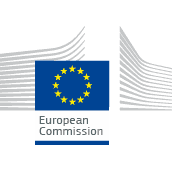
Development of next generation and upgrade of current armoured platforms, including those able to operate in extreme climates and geographical environments
Deadline: Dec 1, 2020
CALL EXPIRED
CALL EXPIRED
Environment
Aerospace Technology
Transport
Climate Sciences
Defence & Cybersecurity
Specific Challenge:
The evolving operational environment requires the development of next generation and the upgrade of current armoured platforms with improved robustness, agility, versatility and interoperability with next generation systems and future unmanned systems.
Scope:
The proposals must address the upgrade of current or the development of next generation armoured platforms, in particular addressing Main Battle Tank (MBT) or Infantry Fighting Vehicle (IFV) or Armoured Personnel Carrier (APC) or other light armoured vehicle, or developing and integrating modern and upgraded systems, subsystems or sensors into existing platforms and/or payloads improving significantly their performance.
Targeted activities
The proposals must cover the study of the proposed solutions, not excluding downstream activities.
The targeted activities could in particular include:
- the collection and definition of concept of operations (CONOPS);
- a feasibility study for the possible concept and technical solutions which fulfil the given high level requirements, including a Detailed Requirements Review (DRR);
- the detailed system specification (i.e. SSS (Sub-system specification) and SSDD (Sub-system design description));
- the high-level design of the selected concept;
- the detailed design of the system, including a System Requirement Review (SRR), a Preliminary Design Review (PDR) and Critical Design Review (CDR);
- the elaboration of a demonstrator;
- the benchmarking/testing of the demonstrator platform against the requirements.
Main high-level requirements
The proposed solution should fulfil the following requirements:
- all systems and subsystems should have a system of systems approach including open architecture concepts (e.g. NATO Generic Vehicle Architecture (NGVA));
- systems should improve logistic footprint and security of supply;
- cyber security should be implemented in all layers of hard and software control functions.
In case of development of new or upgrade of existing tactical platforms/payloads, the proposed solution should also fulfil the following requirements:
- systems should provide a substantial improvement of mobility including possibility to combine high level tactical and operational mobility with minimum performance degradation due to extreme environmental condition and type of terrains as defined in the relevant standards (i.e. NATO STANAG 2895);
- the system should be capable of performing their missions, by day, night and under chemical, biological, radiological and nuclear (CBRN) conditions;
- the system should be optimized to carry out different role tasks according to their specific performance criteria (e.g. troop carrier or firepower);
- the system should comply with the maximum acceptable weight and overall dimensions mandated by transportability requirements and constraints of EU roads, railways, tunnels and bridges; air transportability/drop should also be taken into account; system should also have the capability of crossing water obstacles;
- systems should have high modularity, different versions from one base platform, modular protection levels and taking into account relevant future threats within the operating environment;
- the system should enable low total cost of ownership, including acquisition and lifecycle costs; systems efficient operational lifecycle for new systems should be at least 30 years;
- system should enable payloads capability, low detectability and low signature;
- systems should be prepared for unmanned/optionally manned operations and should be based on innovative and efficient environmental/logistic footprint reducing dependence on fossil fuel.
In case of performance improvement of existing platforms/payloads by development and integration of modern and upgraded systems, subsystems or sensors, the proposed solution should also fulfil the following requirements:
- state-of-the-art system, with modern and intuitive user interfaces (yet compatible with the existing best practices in the field) allowing a fast learning curve;
- system should substantially increase situational awareness of platforms;
- systems should minimize detection and response time to toward entities/potential threats and/or enhance main weapons’ effectors (e.g. through the use of sensors);
- system should also support effective use of communications, covering also tactical levels. The system should operate in a full IP communication network that should be able to seamlessly use any available transmission mechanism.
Expected Impact:
- Rebuild a credible deterrent in terms of land combat capability, by introducing in the shortest time a significant number of advanced armoured combat vehicles;
- Introduce new innovative (spin-offs) vehicle technologies and capabilities that can be adopted to other vehicles/platforms/layouts;
- Increase EU industry capability to produce new highly innovative vehicle systems;
- Provide solutions that solves future capability needs of several Member States with maximum commonality and modularity;
- Provide vehicle solutions, which have a reduced environmental/logistic footprint;
- Establish European business consortium able to offer competitive solutions for global market;
- Decrease dependence from non-EU technologies and products.
Public link: Only for registered users
 EC - European Defence Fund
EC - European Defence Fund
Please Log In to See This Section